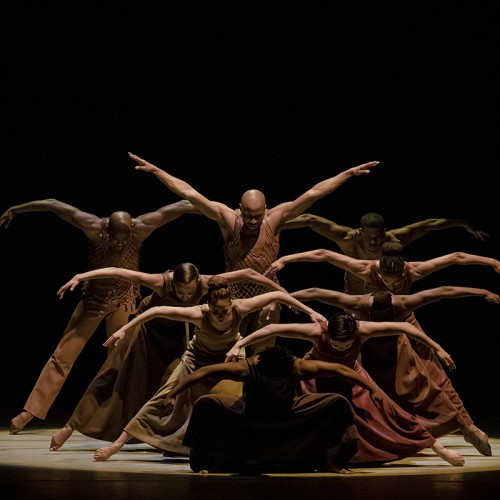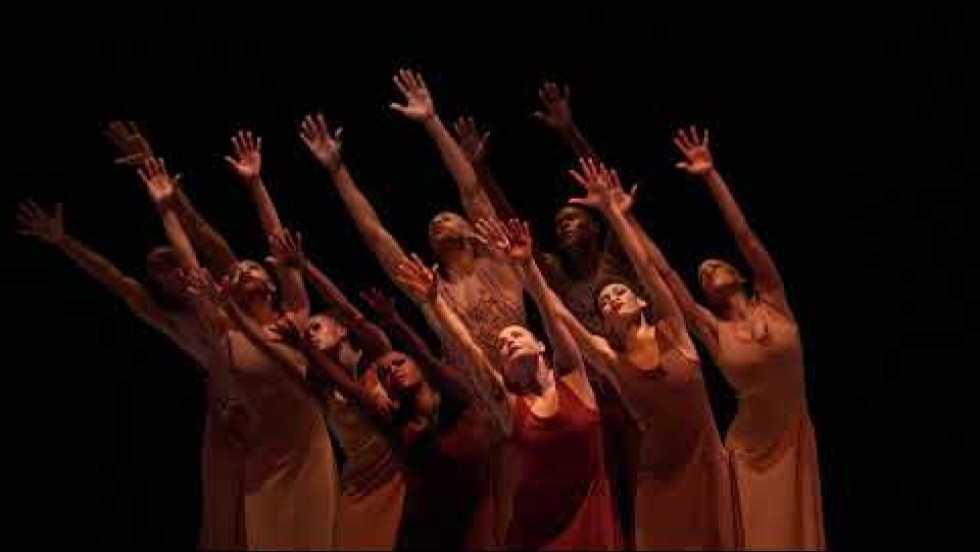Alvin Ailey American Dance Theater
Cookie Notice
This site uses cookies to measure our traffic and improve your experience. By clicking "OK" you consent to our use of cookies.
The iconic Alvin Ailey American Dance Theater returns to the Series for an annual showcase of the company’s extraordinary technique and emotive power, reaffirming their enduring importance in the American cultural landscape.
Mr. Ailey’s choreography, rich in its dynamism and fluidity, showcases a breathtaking range of emotions and narratives, and new works created on the company by exciting contemporary choreographers explore the many facets of today’s Black American experience.
More than a show, an Alvin Ailey performance is a beautiful journey that captivates and uplifts, leaving audiences profoundly moved.
Connect with grace, beauty, faith, pride, strength, and joy when Alvin Ailey American Dance Theater returns to Boston.
Please note: all performances in this engagement feature the use of theatrical haze. Specific ballets are: Finding Free (Thu), Al-Andalus Blues (Fri-Sat eve), and Sacred Songs (Sat mat-Sun).
Photo: Members of Alvin Ailey American Dance Theater. Photo by Dario Calmese.
Thursday, April 24 at 8pm
Two intermissions, total runtime approximately 2 hours and 15 minutes.
Choreography: Ronald K. Brown
Assistant to the Choreographer: Arcell Cabuag
Music: Various Artists
Costumes: Omotayo Wunmi Olaiya
Lighting Design: Tsubasa Kamei
Created for Alvin Ailey American Dance Theater in 1999, new production 2024
Marking its 25th anniversary, Ronald K. Brown’s spellbinding Grace is a fervent tour-de-force depicting individuals on a journey to the promised land. This spiritually charged work was created for Alvin Ailey American Dance Theater in 1999, set to Duke Ellington's classic "Come Sunday," Roy Davis' hit "Gabriel," and the powerful rhythms of Fela Kuti's Afropop beats. Infused with Brown’s signature blend of modern dance and West African idioms, the piece follows 12 dancers on a moving journey illustrating Brown's idea of individuals going through everyday life without acknowledging the 'grace' surrounding us all. Through Grace, Brown seeks to continue "lifting one’s spirit and stirring one’s soul."
"In Grace Mr. Brown hints at a journey to a promised land, a path filled with broken trajectories as the dancers advance or retreat in stunningly packed sequences. The dancing is sensational, full of nonstop arm-flinging leaps." – The New York Times
" ... amazingly explosive image of a spiritual journey." – The New York Times
"... his work is a masterful, intensely original mix of hip-hop, African and modern dance styles."
– Chicago Sun Times
Choreography: Ronald K. Brown
Assistant to the Choreographer: Arcell Cabuag
Music: Various Artists
Costumes: Omotayo Wunmi Olaiya
Lighting Design: Tsubasa Kamei
Created for Alvin Ailey American Dance Theater in 1999, new production 2024
Marking its 25th anniversary, Ronald K. Brown’s spellbinding Grace is a fervent tour-de-force depicting individuals on a journey to the promised land. This spiritually charged work was created for Alvin Ailey American Dance Theater in 1999, set to Duke Ellington's classic "Come Sunday," Roy Davis' hit "Gabriel," and the powerful rhythms of Fela Kuti's Afropop beats. Infused with Brown’s signature blend of modern dance and West African idioms, the piece follows 12 dancers on a moving journey illustrating Brown's idea of individuals going through everyday life without acknowledging the 'grace' surrounding us all. Through Grace, Brown seeks to continue "lifting one’s spirit and stirring one’s soul."
"In Grace Mr. Brown hints at a journey to a promised land, a path filled with broken trajectories as the dancers advance or retreat in stunningly packed sequences. The dancing is sensational, full of nonstop arm-flinging leaps." – The New York Times
" ... amazingly explosive image of a spiritual journey." – The New York Times
"... his work is a masterful, intensely original mix of hip-hop, African and modern dance styles."
– Chicago Sun Times
Choreography: Hope Boykin
Assistant to the Choreographer: Terri Ayanna Wright
Music: Matthew Whitaker
Costumes: Hope Boykin and Jon Taylor
Lighting: Al Crawford
World Premiere, 2024
Finding Free is not the absence of trials but the ability to carry weight, gaining the strength to endure.
Hope Boykin's collaboration with composer and pianist Matthew Whitaker examines the challenges and restrictions throughout life’s peaks and valleys that propel the journey forward.
This insightful work uses Ms. Boykin’s movement-language and Mr. Whitaker’s jazz and gospel influenced score to explore notions of personal freedoms.
Note: This ballet features the use of theatrical haze.
Choreography: Hope Boykin
Assistant to the Choreographer: Terri Ayanna Wright
Music: Matthew Whitaker
Costumes: Hope Boykin and Jon Taylor
Lighting: Al Crawford
World Premiere, 2024
Finding Free is not the absence of trials but the ability to carry weight, gaining the strength to endure.
Hope Boykin's collaboration with composer and pianist Matthew Whitaker examines the challenges and restrictions throughout life’s peaks and valleys that propel the journey forward.
This insightful work uses Ms. Boykin’s movement-language and Mr. Whitaker’s jazz and gospel influenced score to explore notions of personal freedoms.
Note: This ballet features the use of theatrical haze.
Choreography: Alvin Ailey
Music: Traditional
Décor and Costumes: Ves Harper
Costumes for “Rocka My Soul” redesigned by: Barbara Forbes
Lighting Design: Nicola Cernovitch
Since its creation in 1960, Revelations has consistently enraptured audiences all over the world with its perfect blend of reverent grace and spiritual elation. Alvin Ailey’s signature masterpiece pays homage to and reflects the cultural heritage of the African-American, which Ailey considered one of America’s richest treasures – “sometimes sorrowful, sometimes jubilant, but always hopeful.”
Choreographed when Ailey was only 29 years old, Revelations is an intimate reflection inspired by childhood memories of attending services at Mount Olive Baptist Church in Texas, and by the work of writers James Baldwin and Langston Hughes.
Set to a suite of traditional spirituals, Revelations explores the emotional spectrum of the human condition, from the deepest of grief to the holiest joy. A classic tribute to the resolve and determination of a people, the ballet has been seen by more people around the world than any other modern work.
Of its creation, Ailey once recalled: “I did it chronologically, leading off with the opening part of Revelations, which was…about trying to get up out of the ground. The costumes and the set would be colored brown, an earth color, for coming out of the earth, for going into the earth. The second part was something that was very close to me – the baptismal, the purification rite. Its colors would be white and pale blue. Then there would be the section surrounding the gospel church, the holy rollers and all the church happiness. Its colors would be earth tones, yellow and black.”
The ballet premiered at the 92nd Street YM-YWHA on January 31, 1960, and has since been performed a countless number of times all over the world.
It was part of Opening Ceremonies of the 1968 Olympics, and has been presented at the White House on numerous occasions, including at the inaugurations of Jimmy Carter and Bill Clinton. The piece has had many film and television broadcasts, its first, the 1962 CBS special Lamp Under my Feet. It is also the framework for Revelations: An Interdisciplinary Approach, a residency program that has been implemented in public schools around the country, and uses Ailey’s signature work as an organizing theme for a comprehensive, in-depth study of language arts, social studies and dance.
Alvin Ailey combined Horton technique with his own astounding choreographic vision to create a series of movement that intertwines impossible strength and ethereal grace.
Now in its seventh decade, this American classic has proven to be a cultural landmark in the world of dance, maintaining its astonishing originality and powerful elegance while continuing to inspire and enthrall audiences everywhere.
Choreography: Alvin Ailey
Music: Traditional
Décor and Costumes: Ves Harper
Costumes for “Rocka My Soul” redesigned by: Barbara Forbes
Lighting Design: Nicola Cernovitch
Since its creation in 1960, Revelations has consistently enraptured audiences all over the world with its perfect blend of reverent grace and spiritual elation. Alvin Ailey’s signature masterpiece pays homage to and reflects the cultural heritage of the African-American, which Ailey considered one of America’s richest treasures – “sometimes sorrowful, sometimes jubilant, but always hopeful.”
Choreographed when Ailey was only 29 years old, Revelations is an intimate reflection inspired by childhood memories of attending services at Mount Olive Baptist Church in Texas, and by the work of writers James Baldwin and Langston Hughes.
Set to a suite of traditional spirituals, Revelations explores the emotional spectrum of the human condition, from the deepest of grief to the holiest joy. A classic tribute to the resolve and determination of a people, the ballet has been seen by more people around the world than any other modern work.
Of its creation, Ailey once recalled: “I did it chronologically, leading off with the opening part of Revelations, which was…about trying to get up out of the ground. The costumes and the set would be colored brown, an earth color, for coming out of the earth, for going into the earth. The second part was something that was very close to me – the baptismal, the purification rite. Its colors would be white and pale blue. Then there would be the section surrounding the gospel church, the holy rollers and all the church happiness. Its colors would be earth tones, yellow and black.”
The ballet premiered at the 92nd Street YM-YWHA on January 31, 1960, and has since been performed a countless number of times all over the world.
It was part of Opening Ceremonies of the 1968 Olympics, and has been presented at the White House on numerous occasions, including at the inaugurations of Jimmy Carter and Bill Clinton. The piece has had many film and television broadcasts, its first, the 1962 CBS special Lamp Under my Feet. It is also the framework for Revelations: An Interdisciplinary Approach, a residency program that has been implemented in public schools around the country, and uses Ailey’s signature work as an organizing theme for a comprehensive, in-depth study of language arts, social studies and dance.
Alvin Ailey combined Horton technique with his own astounding choreographic vision to create a series of movement that intertwines impossible strength and ethereal grace.
Now in its seventh decade, this American classic has proven to be a cultural landmark in the world of dance, maintaining its astonishing originality and powerful elegance while continuing to inspire and enthrall audiences everywhere.
Friday, April 25 at 8pm & Saturday, April 26 at 8pm
Two intermissions, total runtime approximately 2 hours.
Choreography: Ronald K. Brown
Assistant to the Choreographer: Arcell Cabuag
Music: Various Artists
Costumes: Omotayo Wunmi Olaiya
Lighting Design: Tsubasa Kamei
Created for Alvin Ailey American Dance Theater in 1999, new production 2024
Marking its 25th anniversary, Ronald K. Brown’s spellbinding Grace is a fervent tour-de-force depicting individuals on a journey to the promised land. This spiritually charged work was created for Alvin Ailey American Dance Theater in 1999, set to Duke Ellington's classic "Come Sunday," Roy Davis' hit "Gabriel," and the powerful rhythms of Fela Kuti's Afropop beats. Infused with Brown’s signature blend of modern dance and West African idioms, the piece follows 12 dancers on a moving journey illustrating Brown's idea of individuals going through everyday life without acknowledging the 'grace' surrounding us all. Through Grace, Brown seeks to continue "lifting one’s spirit and stirring one’s soul."
"In Grace Mr. Brown hints at a journey to a promised land, a path filled with broken trajectories as the dancers advance or retreat in stunningly packed sequences. The dancing is sensational, full of nonstop arm-flinging leaps." – The New York Times
" ... amazingly explosive image of a spiritual journey." – The New York Times
"... his work is a masterful, intensely original mix of hip-hop, African and modern dance styles."
– Chicago Sun Times
Choreography: Ronald K. Brown
Assistant to the Choreographer: Arcell Cabuag
Music: Various Artists
Costumes: Omotayo Wunmi Olaiya
Lighting Design: Tsubasa Kamei
Created for Alvin Ailey American Dance Theater in 1999, new production 2024
Marking its 25th anniversary, Ronald K. Brown’s spellbinding Grace is a fervent tour-de-force depicting individuals on a journey to the promised land. This spiritually charged work was created for Alvin Ailey American Dance Theater in 1999, set to Duke Ellington's classic "Come Sunday," Roy Davis' hit "Gabriel," and the powerful rhythms of Fela Kuti's Afropop beats. Infused with Brown’s signature blend of modern dance and West African idioms, the piece follows 12 dancers on a moving journey illustrating Brown's idea of individuals going through everyday life without acknowledging the 'grace' surrounding us all. Through Grace, Brown seeks to continue "lifting one’s spirit and stirring one’s soul."
"In Grace Mr. Brown hints at a journey to a promised land, a path filled with broken trajectories as the dancers advance or retreat in stunningly packed sequences. The dancing is sensational, full of nonstop arm-flinging leaps." – The New York Times
" ... amazingly explosive image of a spiritual journey." – The New York Times
"... his work is a masterful, intensely original mix of hip-hop, African and modern dance styles."
– Chicago Sun Times
Choreography Jamar Roberts
Assistant to Choreographer: Ghrai Devore-Stoke
Music: Roberta Flack and Miles Davis
Costumes: Jamar Roberts and Jon Taylor
Lighting: Brandon Stirling Baker
Scenic Design: Libby Stadstad
World Premiere, 2024
Journey back in time to the Golden Age of Al-Andalus on the Iberian Peninsula as Jamar Roberts evokes the northern African Moors who inhabited the land prior to the Christian Reconquista.
Music from Roberta Flack and Miles Davis’ Sketches of Spain sets the tone for this abstract ensemble piece.
Note: this ballet features the use of theatrical haze.
Choreography Jamar Roberts
Assistant to Choreographer: Ghrai Devore-Stoke
Music: Roberta Flack and Miles Davis
Costumes: Jamar Roberts and Jon Taylor
Lighting: Brandon Stirling Baker
Scenic Design: Libby Stadstad
World Premiere, 2024
Journey back in time to the Golden Age of Al-Andalus on the Iberian Peninsula as Jamar Roberts evokes the northern African Moors who inhabited the land prior to the Christian Reconquista.
Music from Roberta Flack and Miles Davis’ Sketches of Spain sets the tone for this abstract ensemble piece.
Note: this ballet features the use of theatrical haze.
Choreography: Alvin Ailey
Music: Traditional
Décor and Costumes: Ves Harper
Costumes for “Rocka My Soul” redesigned by: Barbara Forbes
Lighting Design: Nicola Cernovitch
Since its creation in 1960, Revelations has consistently enraptured audiences all over the world with its perfect blend of reverent grace and spiritual elation. Alvin Ailey’s signature masterpiece pays homage to and reflects the cultural heritage of the African-American, which Ailey considered one of America’s richest treasures – “sometimes sorrowful, sometimes jubilant, but always hopeful.”
Choreographed when Ailey was only 29 years old, Revelations is an intimate reflection inspired by childhood memories of attending services at Mount Olive Baptist Church in Texas, and by the work of writers James Baldwin and Langston Hughes.
Set to a suite of traditional spirituals, Revelations explores the emotional spectrum of the human condition, from the deepest of grief to the holiest joy. A classic tribute to the resolve and determination of a people, the ballet has been seen by more people around the world than any other modern work.
Of its creation, Ailey once recalled: “I did it chronologically, leading off with the opening part of Revelations, which was…about trying to get up out of the ground. The costumes and the set would be colored brown, an earth color, for coming out of the earth, for going into the earth. The second part was something that was very close to me – the baptismal, the purification rite. Its colors would be white and pale blue. Then there would be the section surrounding the gospel church, the holy rollers and all the church happiness. Its colors would be earth tones, yellow and black.”
The ballet premiered at the 92nd Street YM-YWHA on January 31, 1960, and has since been performed a countless number of times all over the world.
It was part of Opening Ceremonies of the 1968 Olympics, and has been presented at the White House on numerous occasions, including at the inaugurations of Jimmy Carter and Bill Clinton. The piece has had many film and television broadcasts, its first, the 1962 CBS special Lamp Under my Feet. It is also the framework for Revelations: An Interdisciplinary Approach, a residency program that has been implemented in public schools around the country, and uses Ailey’s signature work as an organizing theme for a comprehensive, in-depth study of language arts, social studies and dance.
Alvin Ailey combined Horton technique with his own astounding choreographic vision to create a series of movement that intertwines impossible strength and ethereal grace.
Now in its seventh decade, this American classic has proven to be a cultural landmark in the world of dance, maintaining its astonishing originality and powerful elegance while continuing to inspire and enthrall audiences everywhere.
Choreography: Alvin Ailey
Music: Traditional
Décor and Costumes: Ves Harper
Costumes for “Rocka My Soul” redesigned by: Barbara Forbes
Lighting Design: Nicola Cernovitch
Since its creation in 1960, Revelations has consistently enraptured audiences all over the world with its perfect blend of reverent grace and spiritual elation. Alvin Ailey’s signature masterpiece pays homage to and reflects the cultural heritage of the African-American, which Ailey considered one of America’s richest treasures – “sometimes sorrowful, sometimes jubilant, but always hopeful.”
Choreographed when Ailey was only 29 years old, Revelations is an intimate reflection inspired by childhood memories of attending services at Mount Olive Baptist Church in Texas, and by the work of writers James Baldwin and Langston Hughes.
Set to a suite of traditional spirituals, Revelations explores the emotional spectrum of the human condition, from the deepest of grief to the holiest joy. A classic tribute to the resolve and determination of a people, the ballet has been seen by more people around the world than any other modern work.
Of its creation, Ailey once recalled: “I did it chronologically, leading off with the opening part of Revelations, which was…about trying to get up out of the ground. The costumes and the set would be colored brown, an earth color, for coming out of the earth, for going into the earth. The second part was something that was very close to me – the baptismal, the purification rite. Its colors would be white and pale blue. Then there would be the section surrounding the gospel church, the holy rollers and all the church happiness. Its colors would be earth tones, yellow and black.”
The ballet premiered at the 92nd Street YM-YWHA on January 31, 1960, and has since been performed a countless number of times all over the world.
It was part of Opening Ceremonies of the 1968 Olympics, and has been presented at the White House on numerous occasions, including at the inaugurations of Jimmy Carter and Bill Clinton. The piece has had many film and television broadcasts, its first, the 1962 CBS special Lamp Under my Feet. It is also the framework for Revelations: An Interdisciplinary Approach, a residency program that has been implemented in public schools around the country, and uses Ailey’s signature work as an organizing theme for a comprehensive, in-depth study of language arts, social studies and dance.
Alvin Ailey combined Horton technique with his own astounding choreographic vision to create a series of movement that intertwines impossible strength and ethereal grace.
Now in its seventh decade, this American classic has proven to be a cultural landmark in the world of dance, maintaining its astonishing originality and powerful elegance while continuing to inspire and enthrall audiences everywhere.
Saturday, April 26 at 2pm and Sunday, April 27 at 3pm
One intermission to follow "Sacred Songs," one pause to follow "Many Angels." Total runtime 1 hour 45 minutes.
Choreography: Matthew Rushing
Assistant to Choreographer: Alexandria Johnson
Creative Associate and Music Director: Du’Bois A’Keen
Costumes: Danté Baylor
Lighting: Andre A. Vasquez
Scenic Design: Matthew Rushing and Joseph Anthony Gaito
World premiere, 2024
Featuring songs used in the original 1960 version of Alvin Ailey’s seminal Revelations but later omitted, this stirring work resurrects and reimagines those spirituals as an offering to our present need for lamentation, faith, and joy.
Please note: This ballet features the use of theatrical haze.
Choreography: Matthew Rushing
Assistant to Choreographer: Alexandria Johnson
Creative Associate and Music Director: Du’Bois A’Keen
Costumes: Danté Baylor
Lighting: Andre A. Vasquez
Scenic Design: Matthew Rushing and Joseph Anthony Gaito
World premiere, 2024
Featuring songs used in the original 1960 version of Alvin Ailey’s seminal Revelations but later omitted, this stirring work resurrects and reimagines those spirituals as an offering to our present need for lamentation, faith, and joy.
Please note: This ballet features the use of theatrical haze.
Choreographer: Lar Lubovitch
Assistant to Choreographer: Katarzyna Skarpetowska
Music: Gustav Mahler
Costumes: Harriet Jung and Reid Bartelme
Lighting: Clifton Taylor
Scenic Design: Lar Lubovitch
The expression "How many Angels can dance on the head of a pin?” is a question with no logical answer. "Why do you make dances?” is another one.
Occasionally something may exist in the world simply for the sake of itself - for example, a dance. Many Angels is a dance to music by Gustav Mahler. It’s not really about Angels. (Well, maybe a little).
Music credit information: “Adagietto” from Symphony No. 5 in C-Sharp Minor, performed by the Chicago Symphony Orchestra, Daniel Barenboim conducting.
Choreographer: Lar Lubovitch
Assistant to Choreographer: Katarzyna Skarpetowska
Music: Gustav Mahler
Costumes: Harriet Jung and Reid Bartelme
Lighting: Clifton Taylor
Scenic Design: Lar Lubovitch
The expression "How many Angels can dance on the head of a pin?” is a question with no logical answer. "Why do you make dances?” is another one.
Occasionally something may exist in the world simply for the sake of itself - for example, a dance. Many Angels is a dance to music by Gustav Mahler. It’s not really about Angels. (Well, maybe a little).
Music credit information: “Adagietto” from Symphony No. 5 in C-Sharp Minor, performed by the Chicago Symphony Orchestra, Daniel Barenboim conducting.
Choreography: Alvin Ailey
Music: Traditional
Décor and Costumes: Ves Harper
Costumes for “Rocka My Soul” redesigned by: Barbara Forbes
Lighting Design: Nicola Cernovitch
Since its creation in 1960, Revelations has consistently enraptured audiences all over the world with its perfect blend of reverent grace and spiritual elation. Alvin Ailey’s signature masterpiece pays homage to and reflects the cultural heritage of the African-American, which Ailey considered one of America’s richest treasures – “sometimes sorrowful, sometimes jubilant, but always hopeful.”
Choreographed when Ailey was only 29 years old, Revelations is an intimate reflection inspired by childhood memories of attending services at Mount Olive Baptist Church in Texas, and by the work of writers James Baldwin and Langston Hughes.
Set to a suite of traditional spirituals, Revelations explores the emotional spectrum of the human condition, from the deepest of grief to the holiest joy. A classic tribute to the resolve and determination of a people, the ballet has been seen by more people around the world than any other modern work.
Of its creation, Ailey once recalled: “I did it chronologically, leading off with the opening part of Revelations, which was…about trying to get up out of the ground. The costumes and the set would be colored brown, an earth color, for coming out of the earth, for going into the earth. The second part was something that was very close to me – the baptismal, the purification rite. Its colors would be white and pale blue. Then there would be the section surrounding the gospel church, the holy rollers and all the church happiness. Its colors would be earth tones, yellow and black.”
The ballet premiered at the 92nd Street YM-YWHA on January 31, 1960, and has since been performed a countless number of times all over the world.
It was part of Opening Ceremonies of the 1968 Olympics, and has been presented at the White House on numerous occasions, including at the inaugurations of Jimmy Carter and Bill Clinton. The piece has had many film and television broadcasts, its first, the 1962 CBS special Lamp Under my Feet. It is also the framework for Revelations: An Interdisciplinary Approach, a residency program that has been implemented in public schools around the country, and uses Ailey’s signature work as an organizing theme for a comprehensive, in-depth study of language arts, social studies and dance.
Alvin Ailey combined Horton technique with his own astounding choreographic vision to create a series of movement that intertwines impossible strength and ethereal grace.
Now in its seventh decade, this American classic has proven to be a cultural landmark in the world of dance, maintaining its astonishing originality and powerful elegance while continuing to inspire and enthrall audiences everywhere.
Choreography: Alvin Ailey
Music: Traditional
Décor and Costumes: Ves Harper
Costumes for “Rocka My Soul” redesigned by: Barbara Forbes
Lighting Design: Nicola Cernovitch
Since its creation in 1960, Revelations has consistently enraptured audiences all over the world with its perfect blend of reverent grace and spiritual elation. Alvin Ailey’s signature masterpiece pays homage to and reflects the cultural heritage of the African-American, which Ailey considered one of America’s richest treasures – “sometimes sorrowful, sometimes jubilant, but always hopeful.”
Choreographed when Ailey was only 29 years old, Revelations is an intimate reflection inspired by childhood memories of attending services at Mount Olive Baptist Church in Texas, and by the work of writers James Baldwin and Langston Hughes.
Set to a suite of traditional spirituals, Revelations explores the emotional spectrum of the human condition, from the deepest of grief to the holiest joy. A classic tribute to the resolve and determination of a people, the ballet has been seen by more people around the world than any other modern work.
Of its creation, Ailey once recalled: “I did it chronologically, leading off with the opening part of Revelations, which was…about trying to get up out of the ground. The costumes and the set would be colored brown, an earth color, for coming out of the earth, for going into the earth. The second part was something that was very close to me – the baptismal, the purification rite. Its colors would be white and pale blue. Then there would be the section surrounding the gospel church, the holy rollers and all the church happiness. Its colors would be earth tones, yellow and black.”
The ballet premiered at the 92nd Street YM-YWHA on January 31, 1960, and has since been performed a countless number of times all over the world.
It was part of Opening Ceremonies of the 1968 Olympics, and has been presented at the White House on numerous occasions, including at the inaugurations of Jimmy Carter and Bill Clinton. The piece has had many film and television broadcasts, its first, the 1962 CBS special Lamp Under my Feet. It is also the framework for Revelations: An Interdisciplinary Approach, a residency program that has been implemented in public schools around the country, and uses Ailey’s signature work as an organizing theme for a comprehensive, in-depth study of language arts, social studies and dance.
Alvin Ailey combined Horton technique with his own astounding choreographic vision to create a series of movement that intertwines impossible strength and ethereal grace.
Now in its seventh decade, this American classic has proven to be a cultural landmark in the world of dance, maintaining its astonishing originality and powerful elegance while continuing to inspire and enthrall audiences everywhere.
Ways to Save
Discount ticketing programs for students, first-time attendees, audience members receiving WIC/EBT benefits, and families/small groups
Use code FAMILY to unlock best-available seating for any performance of Alvin Ailey American Dance Theater for $49+fees (all-in price $64.70).
How to claim the offer: On the Ticketmaster seat selection page for this event, tap Unlock button near seat quantity selection menu and enter code FAMILY. Default party size starts at four for this offer.
Use code FAMILY to unlock best-available seating for any performance of Alvin Ailey American Dance Theater for $49+fees (all-in price $64.70).
How to claim the offer: On the Ticketmaster seat selection page for this event, tap Unlock button near seat quantity selection menu and enter code FAMILY. Default party size starts at four for this offer.
If you have been recently laid off or your family has been financially challenged in recent weeks, we invite you to attend Alvin Ailey American Dance Theater at our deepest discount available $19+fees ($27.80 all-in). Government agencies, education, tech, research, academia, or any other industry: we're here for you.
We believe that the arts are for the people and strive to make the arts accessible to all in Greater Boston, because arts can lift you up in hard times. Enter code PEOPLE after choosing "unlock" on the seat selection page to access the special pricing.
Valid for up to 6 tickets per order, on price levels 3, 4, and 5 for all five performances April 24-27. Offer for each performance expires at showtime.
All-in pricing per ticket includes fees; a per-order processing fee of up to $2.50 may apply. Tickets are available with no fees in person only at the Wang Theatre box office, 270 Tremont Street in Boston.
If you have been recently laid off or your family has been financially challenged in recent weeks, we invite you to attend Alvin Ailey American Dance Theater at our deepest discount available $19+fees ($27.80 all-in). Government agencies, education, tech, research, academia, or any other industry: we're here for you.
We believe that the arts are for the people and strive to make the arts accessible to all in Greater Boston, because arts can lift you up in hard times. Enter code PEOPLE after choosing "unlock" on the seat selection page to access the special pricing.
Valid for up to 6 tickets per order, on price levels 3, 4, and 5 for all five performances April 24-27. Offer for each performance expires at showtime.
All-in pricing per ticket includes fees; a per-order processing fee of up to $2.50 may apply. Tickets are available with no fees in person only at the Wang Theatre box office, 270 Tremont Street in Boston.
Use code ADVSTU to unlock best-available seating for any performance of Alvin Ailey American Dance Theater for $20+fees (all-in price $28.85).
How to claim the offer: On the Ticketmaster seat selection page for this event, tap Unlock button near seat quantity selection menu and enter code ADVSTU.
Available to students at any grade level with ID. Please show ID at ticket pickup.
Use code ADVSTU to unlock best-available seating for any performance of Alvin Ailey American Dance Theater for $20+fees (all-in price $28.85).
How to claim the offer: On the Ticketmaster seat selection page for this event, tap Unlock button near seat quantity selection menu and enter code ADVSTU.
Available to students at any grade level with ID. Please show ID at ticket pickup.
Featured Artists
“There’s something generous about Alvin Ailey American Dance Theater. It’s there in the dancing – full of skill, passion and a charismatic warmth not always seen in contemporary dance companies. ”
The Guardian
2025 Production Photos
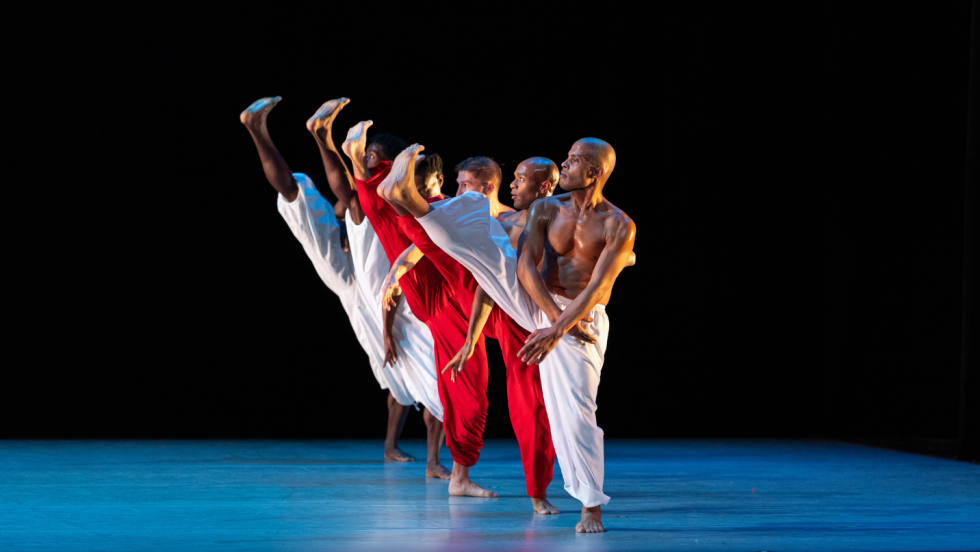
Alvin Ailey American Dance Theater in Ronald K. Brown's Grace. Photo by Danica Paulos.
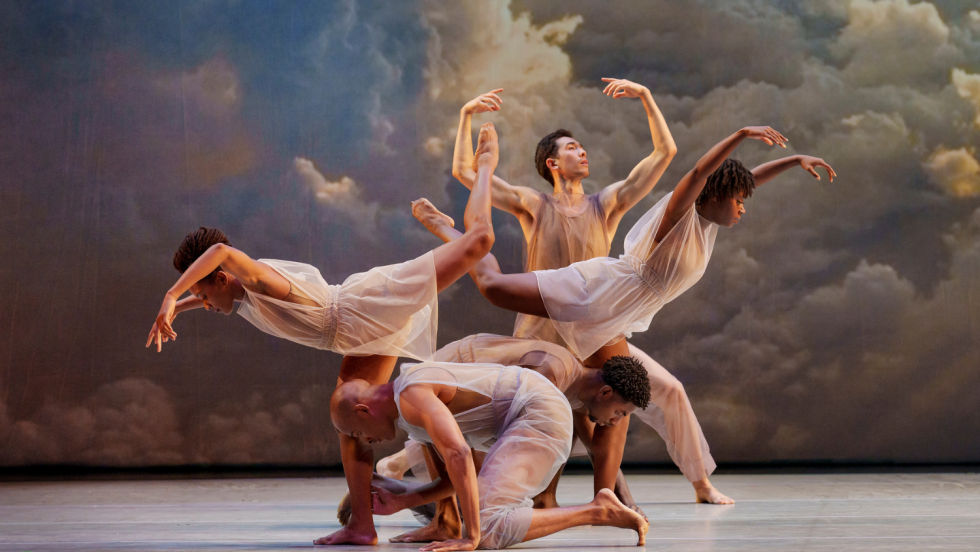
Alvin Ailey American Dance Theater in Lar Lubovitch's Many Angels. Photo by Paul Kolnik.
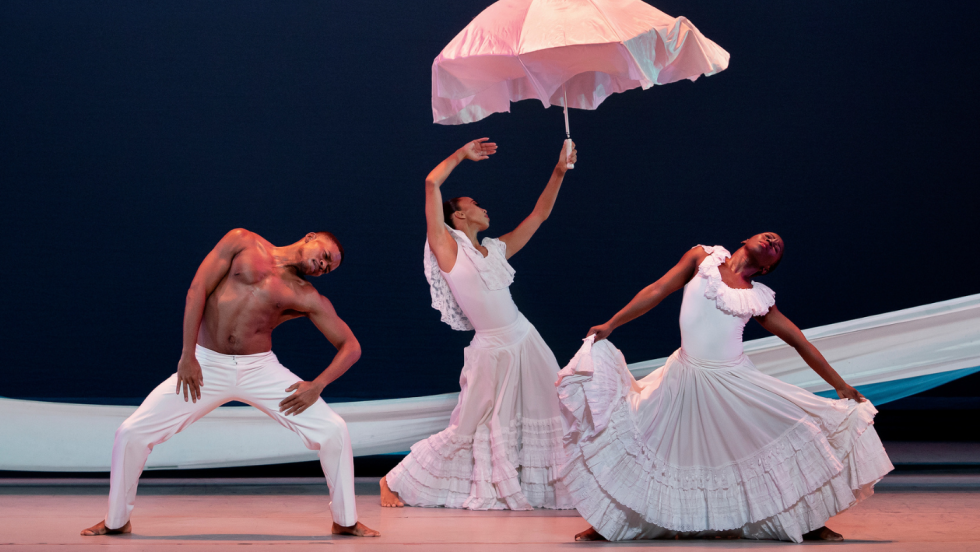
Ailey's Solomon Dumas, Constance Stamatiou, and Yazzmeen Laidler in Alvin Ailey's Revelations. Photo by Paul Kolnik.
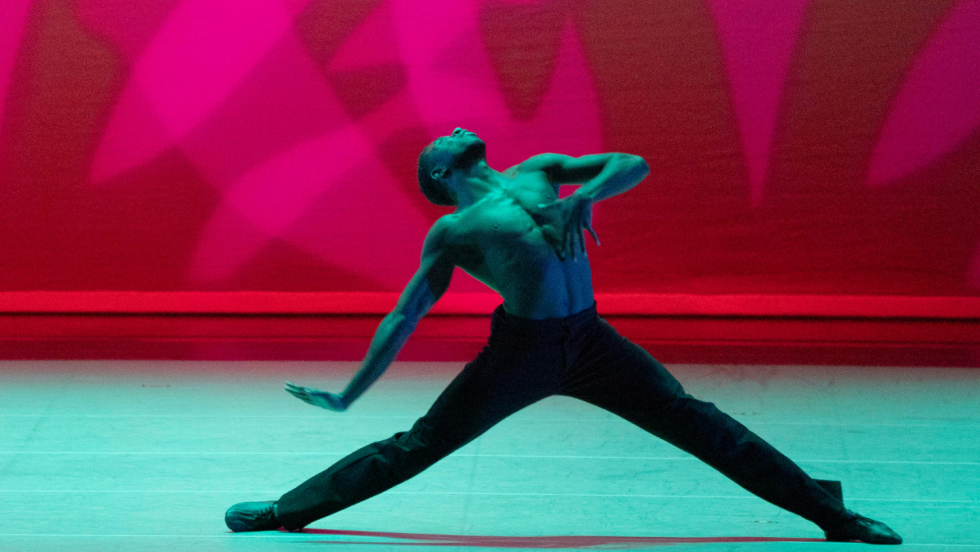
Ailey's Isaiah Day in Alvin Ailey's Revelations. Photo by Daniel Azoulay.
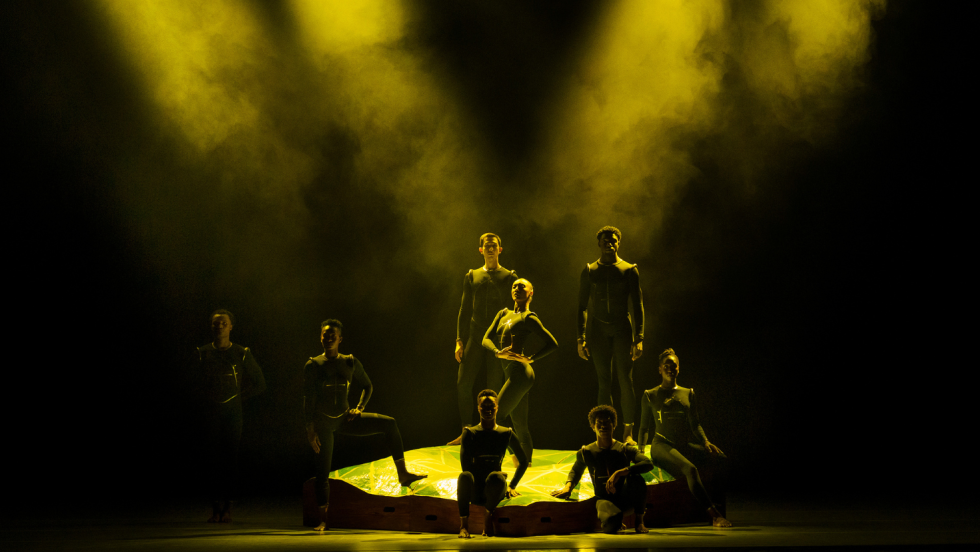
Alvin Ailey American Dance Theater in Jamar Roberts' Al-Andalus Blues. Photo by Paul Kolnik.
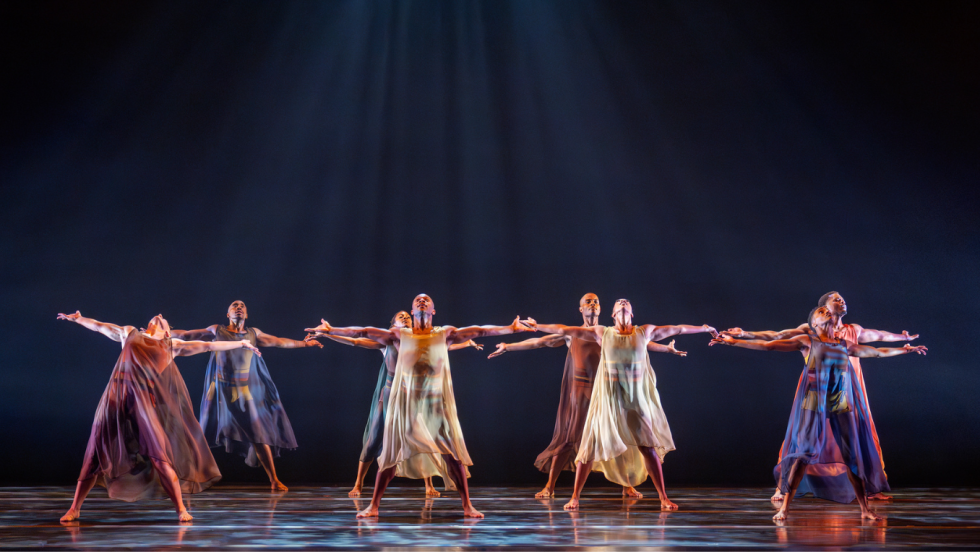
Alvin Ailey American Dance Theater in Hope Boykin's Finding Free. Photo by Paul Kolnik.

Alvin Ailey American Dance Theater in Ronald K. Brown's Grace. Photo by Danica Paulos.

Alvin Ailey American Dance Theater in Lar Lubovitch's Many Angels. Photo by Paul Kolnik.

Ailey's Solomon Dumas, Constance Stamatiou, and Yazzmeen Laidler in Alvin Ailey's Revelations. Photo by Paul Kolnik.

Ailey's Isaiah Day in Alvin Ailey's Revelations. Photo by Daniel Azoulay.

Alvin Ailey American Dance Theater in Jamar Roberts' Al-Andalus Blues. Photo by Paul Kolnik.

Alvin Ailey American Dance Theater in Hope Boykin's Finding Free. Photo by Paul Kolnik.
Videos
Boch Center Wang Theatre Venue Information
The 2024/25 Dance Series is generously supported by
Leslie & Howard Appleby, Crescendo Donor Advised Fund, and Royal Little Family Foundation.
Stay in touch with Celebrity Series of Boston and get the latest.
Email Updates Sign up for Email Updates